
-
Find the right food for your pet
Take this quiz to see which food may be the best for your furry friend.
Find the right food for your pet
Take this quiz to see which food may be the best for your furry friend.
Featured products
Featured products
-
Dog
- Dog Tips & Articles
-
Health Category
- Weight
- Food & Environmental Sensitivities
- Urinary
- Digestive
- Joint
- Kidney
-
Life Stage
- Puppy Nutrition
- Adult Nutrition
- Senior Nutrition
Cat
- Cat Tips & Articles
-
Health Category
- Weight
- Skin & Food Sensitivities
- Urinary
- Digestive
- Kidney
-
Life Stage
- Kitten Nutrition
- Adult Nutrition
Featured articles
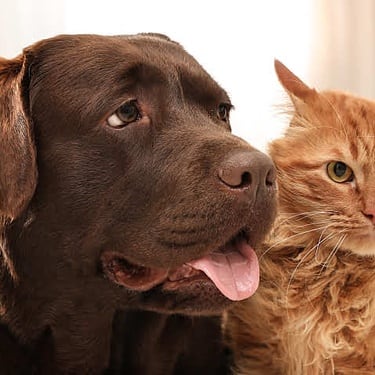 What Cleaning Products Are Safe for Pets?
What Cleaning Products Are Safe for Pets?Learn which cleaning product ingredients can be hazardous for dogs & cats, which alternatives are safer and tips for using cleaning products around pets.
Read MoreTips for Working From Home With a PetGet helpful information on how to get all of your work done while keeping your dog or cat entertained when working from home.
Read More Pet Supply Storage: 8 Upcycling Crafts for Bags and Cans
Pet Supply Storage: 8 Upcycling Crafts for Bags and CansGet helpful hints and tips on how to creatively upcycle your pet's food bags and cans, helping to reduce waste and give your home some visual flair.
Read More -
Find the right food for your pet
Find the right food for your pet


There are lots of things that can cause skin issues in cats, from fleas to food allergies, and many conditions share similar signs and symptoms. Because of this, skin diseases can be very challenging to diagnose. One such condition is allergic dermatitis. Here, we’ll explain the common causes, signs and symptoms so that you can get your cat an accurate diagnosis and the best treatment.
Causes of cat allergic dermatitis
Cat allergic dermatitis refers to a skin condition caused by an allergen. The four most common causes are:
1. Flea allergy
Flea Allergic Dermatitis, or FAD, is very common in cats. Cats become allergic to the flea’s saliva, which is injected into the skin when the fleas feed. In sensitive cats, just one or two bites can cause severe irritation. In turn, this can lead to secondary infection, because bacteria from the skin are able to get into the cat’s system through self-inflicted scratch wounds in the skin. Fleas tend to prefer to stay around the tail base and head and neck, so if flea allergy is the problem, you’ll often notice that signs such as hair loss and scabs are more concentrated in those areas.
It doesn’t take a serious flea infestation to cause signs in an allergic cat, so you may never actually see a flea on them. Fleas spend most of their time in the soft furnishings of the house and just hop on to feed, so you can’t rule out FAD if you don’t see them. A good way to spot the presence of fleas is to look for flea dirt in your cat’s fur. This is flea poo and is made up of digested blood. Comb your cat’s fur onto a white piece of kitchen paper and moisten any blackish specks you see with a drop of water. If it’s household dirt or mud, it won’t change colour, but flea dirt will leave a red stain as the blood soaks into the paper.
2. Atopy
Atopy is an allergy to things in the environment, such as dust mites, storage mites, pollens, grasses, trees, etc. Over time, cats can become allergic to one or several of these environmental allergens. In the case of seasonal allergens, like pollen, signs could only show at certain times of year, while other allergens, like dust, can cause problems year-round.
Atopic dermatitis tends to appear in young cats under the age of five, but it can occur in older cats, too.
Atopy tends to cause irritation around the head, neck and ears, and the tummy, flanks and legs. It is also a cause of otitis (inflamed ear canals). As well as skin signs, inhaled environmental allergens like pollens can also cause asthma in cats.
3. Food allergy or intolerance
Adverse food reactions (AFRs) in animals may be a “true” allergy with an immune reaction to a certain protein, or an intolerance, which isn’t a true allergy. The most common food allergens in cats are chicken, dairy, fish and wheat. Food allergies will cause year-round skin signs and you may also see gastrointestinal signs as well, such as diarrhoea.
4. Contact allergies
Just as it sounds, some allergies occur when your cat comes into contact with something. This could be bedding washed in a certain washing powder or things like plastic food bowls. The signs of contact allergies will vary depending on where the contact is. Signs of irritation and hair loss round the chin are common with food bowl allergies, while other areas of the body may be affected by other chemicals or allergens depending on the point of contact.


Tasty Tips
Signs and symptoms of cat allergies
Cats are great at keeping their fur and skin in tip-top condition, so a healthy cat should have fur that is shiny, well-kept and lustrous. Signs of many skin diseases, including cat allergic dermatitis, include:
- Red patches, spots or pimples.
- Scabs, crusts or thickened skin.
- Hair loss.
- Flaky or scaly patches.
- Bad skin odour.
- Itching, scratching, licking or rubbing.
- Excessive grooming.
- Hair balls, because your cat is grooming more than usual and ingesting excess fur.
- Eosinophilic granulomas. Eosinophils are a type of white blood cell involved in allergic reactions. In cats with severe allergies, you may see bright-red plaques or masses full of these cells on the skin. They often look very inflamed and angry.
Diagnosis and treatment of cat allergic dermatitis
As we mentioned at the beginning, lots of skin diseases cause similar signs, so your vet will need to do tests to rule certain conditions in or out. These may include skin scrapes to look for parasites, hair plucks to check for fungal infections like ringworm, biopsies, blood tests and/or intradermal skin testing.
Treatments will vary depending on the cause of your cat’s allergic dermatitis, but may include the following:
- Very strict flea control with effective products is usually a relatively easy fix for flea allergic dermatitis. If your cat has broken, inflamed skin due to excessive scratching, they may also be given a course of antibiotics and possibly some steroids to help stop the itching. Your vet may also recommend treating your house to get rid of any fleas that are hiding in the soft furnishings.
- Atopy is usually diagnosed after ruling other things out and doing a blood test or intradermal testing to find out what allergens are triggering your cat. You can then have a specific ‘vaccine’ tailor-made to these allergens. This is called immunotherapy and it works by giving tiny doses to start with, then very gradually increasing them over months. The aim of this is to desensitise your cat to the allergens. Obviously, anything you can do to reduce exposure is also useful, such as eliminating storage mites or getting rid of house plants that may be a trigger. Immunotherapy has a good response in around 70-80% of cats.
- If a food allergy is suspected, your vet will want to do an elimination trial. Your cat will be given a special therapeutic food. This may be one that is hydrolysed, which means that the proteins are broken down into such small pieces that the body doesn’t recognise them as allergens. Alternatively, it may be a diet with a novel protein, such as duck or venison, that your cat has not eaten before. It is incredibly important that your cat eats only this food for the length of the trial, which may be up to 12 weeks. Your vet may then rechallenge your cat with various foods to see what the trigger is, or you may decide to just stick with the therapeutic food if you’ve got a great result.
In summary…
It’s important to remember that some cats can have more than one skin issue going on at a time. And the underlying cause may be being complicated by secondary infections and self-trauma. Please be patient with your vet while they work through the process of getting to the bottom of your cat’s skin disease. Always complete courses of treatment that you are given. If you’re ever unsure, just ask your vet to clarify why they opted for that course of action.
Even if your cat is not allergic to food, your vet may recommend changing to a food that is designed to help cats with any skin disease. These foods help bolster the skin barrier function and keep it strong. They have essential fatty acids in them to keep skin healthy and reduce inflammation, along with added ant-oxidants to help reduce cell damage.
Many skin issues can have a great outcome with patience and good teamwork. Hopefully, your cat will soon be itch-free and back to their lustrous, beautiful selves.
Reviewed by Dr. Hein Meyer, DVM, PhD, Dipl-ECVIM-CA and Dr. Emma Milne BVSc FRCVS.


One of our staff authors prepared this article for you
Related products
Related articles

While hairballs are a common occurrence of cats, there are steps you can take to help them manage their problem and keep them healthy.
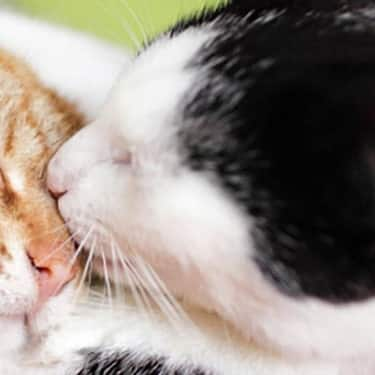
Learn the different factors that might be contributing to your cat's weight gain, and how bigger doesn't always mean better.
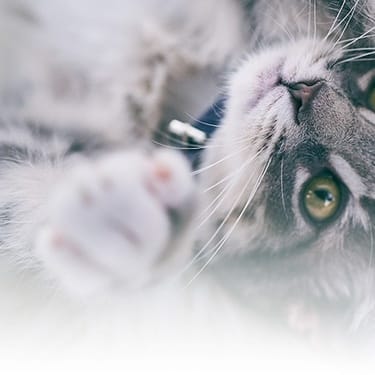
South African vets say more than half the patients they see are overweight. Learn more about managing your cat’s weight.
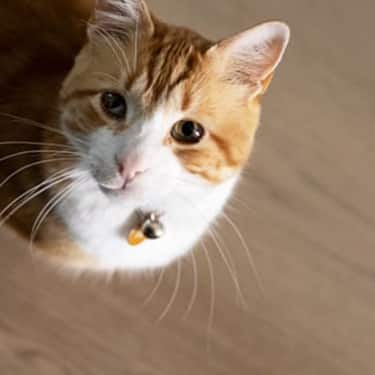
Learn how to spot the signs of a skin condition in your cat and the steps to take for their wellbeing. For comprehensive care advice, visit Hill's Pet.
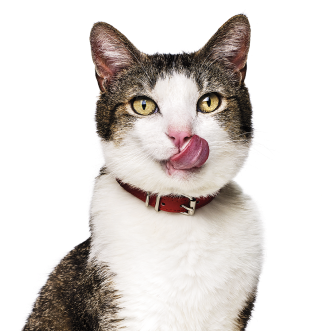
Put your cat on a diet without them knowing
Our low calorie formula helps you control your cat's weight. It's packed with high-quality protein for building lean muscles, and made with purposeful ingredients for a flavorful, nutritious meal. Clinically proven antioxidants, Vitamin C+E, help promote a healthy immune system.
Put your cat on a diet without them knowing
Our low calorie formula helps you control your cat's weight. It's packed with high-quality protein for building lean muscles, and made with purposeful ingredients for a flavorful, nutritious meal. Clinically proven antioxidants, Vitamin C+E, help promote a healthy immune system.

